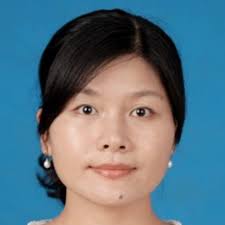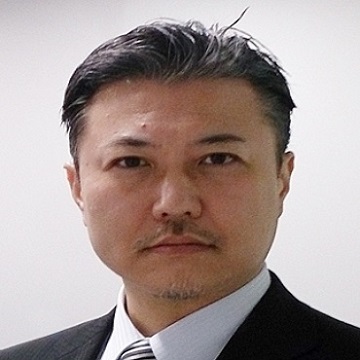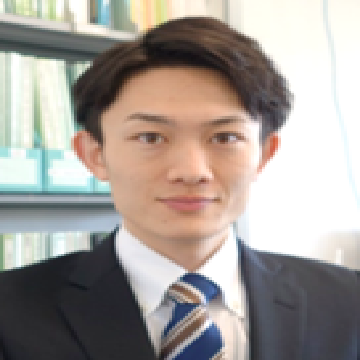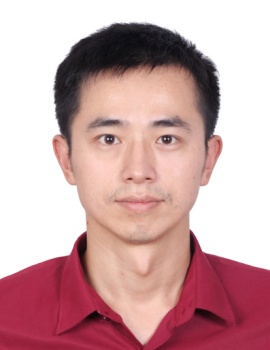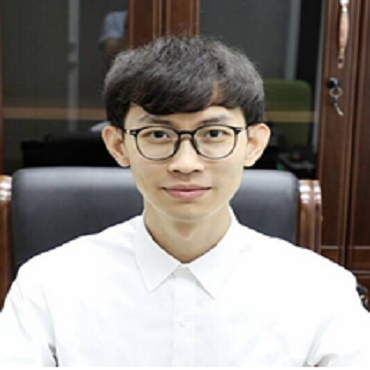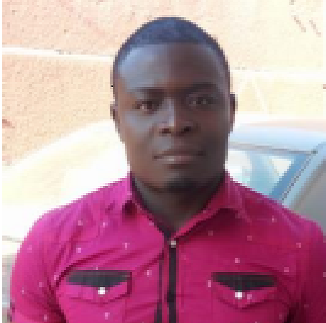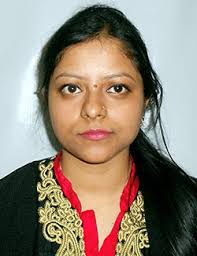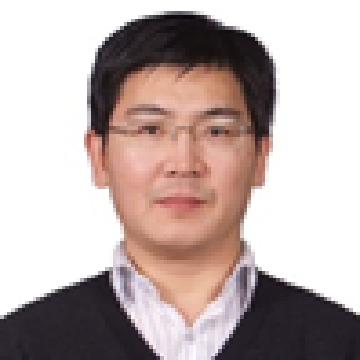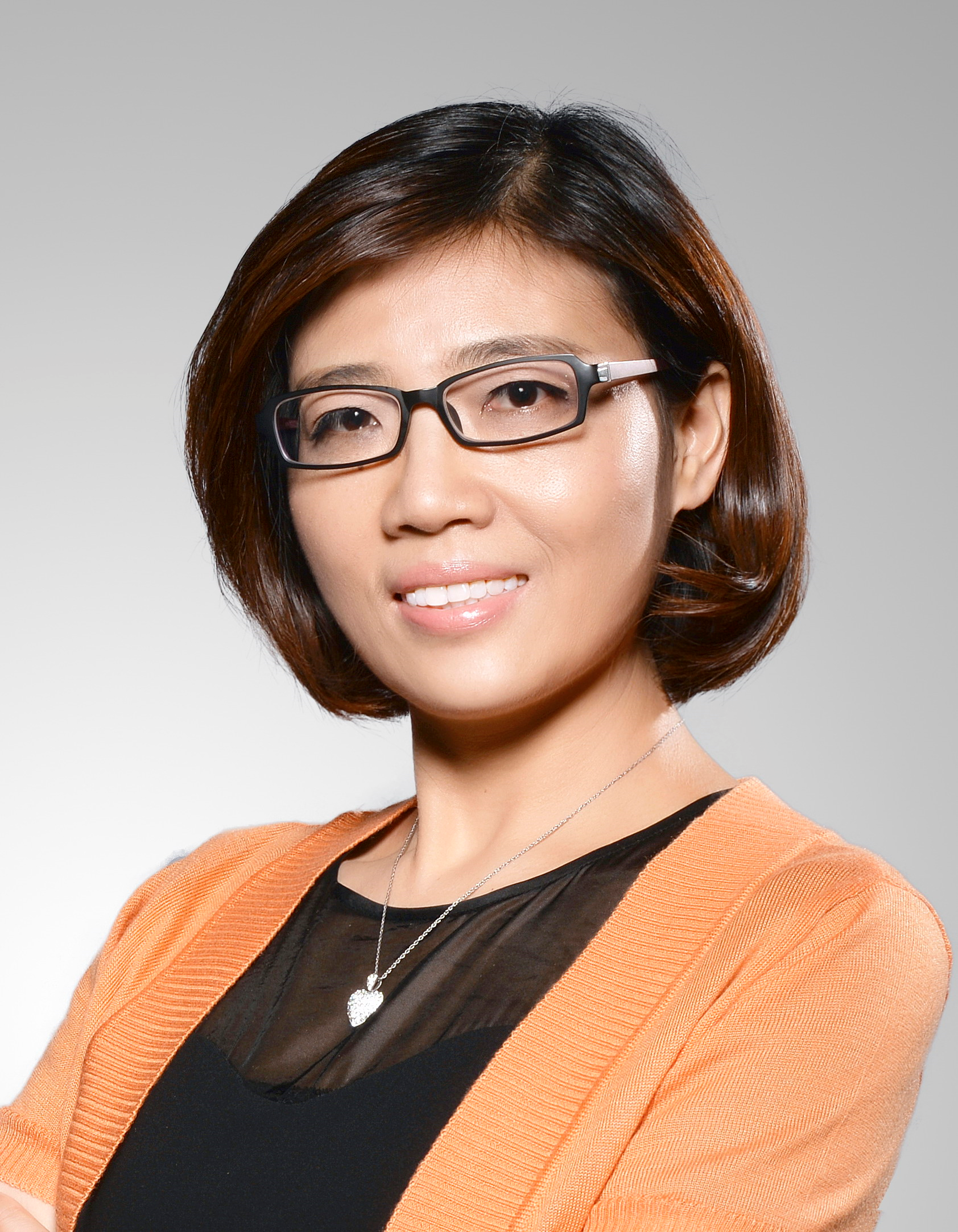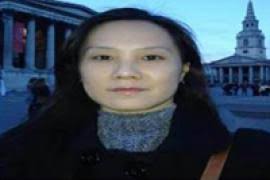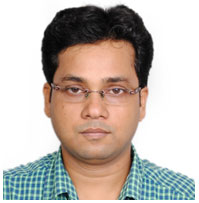Scientific Program
Keynote Session:
Title: Laser polishing and structuring of tooling and functional surfaces
Biography:
Evgueni Bordatchev is a Senior Research Officer and a Team Leader for Microfabrication and Surface Functionalization group at the National Research Council of Canada, in London, Ontario, Canada. He received Master, PhD, and Doctor of Technical Science degrees in electro-mechanical engineering from Don State Technical University, Rostov-on-Don, Russia, in 1982, 1989 and 1996, respectively. Since 1998, he is with National Research Council demonstrating his national and international recognition as an expert in laser- and cutting-based high-precision micromachining, surface functionalization, laser polishing, micro/nano-optics,micro-opto-electro-mechanical systems/sensors, and micro-moulds/dies. He has authored/co-authored over 280 publications, holds 6 patents, and has collaborated with researchers in Germany, United States, Taiwan, Brazil and in other countries. Evgueni Bordatchev is an Adjunct Professor at the Western University (London, Ontario, Canada) since year 2000, and he is also a member of Editorial Board for Springer’s Journal Lasers in Manufacturing and Materials Processing. Dr. Bordatchev is also a Sustaining Member of the American Society of Precision Engineering (ASPE) and a Senior Member of the Institute of Electrical and Electronics Engineering (IEEE).
Abstract:
Since its inception, laser polishing (LP) technology has been receiving an increasing attention as a plausible alternative to the conventional polishing techniques. The main driver behind the development of LP technology resides in the fact that >40% of the tooling cost is associated with high-cost and time-consuming manual polishing. By contrast, LP can significantly reduce these costs by the high level of automation and the precision provided through its coupling with CNC technology. Considering its potential applications in automotive, aerospace and biomedical industries, the Automotive Portfolio of the National Research Council (NRC), Canada has been actively engaged in the development of LP technology. Building on this activity, the main objective of the present report is to introduce some of the achievements and developments of LP technology at NRC over the past five years. This presentation will focus on detail description of the laser-based  polishing and surface functionalization processes, their advantages and disadvantages with respect to the conventical abrasive polishing techniques, and examples of LP process technical implementations along with examples of LPed parts and functional surfaces, e.g. for controlled wettability, friction, adhesion, drag, and hydro-/aerodynamics. Then common understanding the process physics, process classification and its variants, material and surface characterization, and modeling capability will be presented. In addition, effect of most critical process parameters, laser type and characteristics, laser path trajectory, and process planning methodologies on achieved surface quality and physical-mechanical characteristics, e.g. gloss, micro-hardness, metallographic structures, corrosion resistance and others. Along these lines, a statistical digital twin of the laser micro-polishing process will be introduced as a thermodynamic transfer function with associated thermophysical model of the rapid melting-solidification of H13 tool steel as induced by continuous wave laser irradiation. In addition, the multi-process laser melting-based processing system will be analyzed from the perspective of Industry 4.0 integration. This avenue will be explored to better understand the possibility to couple the statistical digital twin of the LP process with the existing built-in sensing capabilities of the laser processing system (e.g. high-speed thermographic imaging), an effort regarded as the stepping stone towards the future additions of artificial intelligence, machine learning, multi-objective optimization, predictive control, and other aspects of smart manufacturing. Special attention will be placed on technical applications of the LP process in manufacturing tooling, molds and dies, medical implants, additive manufactured parts, optics, and others. The presentation will conclude with techno-economic analysis of the LP implementation, an outlook on the future of the technology, and technical and knowledge gaps that still need to be filled.
Title: Engineered Functional Surfaces by Laser Micro Processing
Biography:
Guan Yingchun CEng (TWI) is a Full Professor of material processing who is director of multiscale laser manufacturing center at Beihang University. She has made several contributions in areas of laser material processing over the last dozen years, and her work has affected precision engineering and surface technology.
Abstract:
Laser Micro Processing has been considered as promising technique to enhance surface performance of materials or components in various applications including aerospace manufacturing and biomedical devices. This talk will present recent work of laser surface techniques including cleaning, polishing, and texturing on various substrates in our group. How the surfaces could be manipulated at various scales to obtain specific properties will also be elaborated on.
Title: Direct Fabrication of Ceramic Components by Ultraviolet Laser Lithography
Biography:
Soshu Kirihara is a doctor of engineering and a professor of Joining and Welding Research Institute (JWRI), Osaka University, Japan. In his main investigation “Materials Tectonics” for environmental improvements of “Geotechnology”, multi-dimensional structures were successfully fabricated to modulate energy and materials flows effectively. Ceramic and metal components were fabricated directly by smart additive manufacturing, design and evaluation (Smart MADE) using high power ultraviolet laser lithography. Original stereolithography systems were developed, and new start-up company “SK-Fine” was established through academic-industrial collaboration.
Abstract:
Ultraviolet laser lithography was newly developed as a direct forming process of fine ceramic components with micro geometric patterns. As additive manufacturing techniques, two dimensional cross sections were created through dewaxing and sintering by UV laser drawing on spread resin paste including ceramic nanoparticles, and three dimensional composite models were sterically printed by layer laminations and interlayer joining. Alumina particles of 300 nm in average diameter were dispersed in to photo sensitive liquid resins at 50 % in volume fraction. The resin paste was spread on a glass substrate at 50 μm in layer thickness by a mechanically moved knife edge. An ultraviolet laser beam of 355 nm in wavelength was adjusted at 10 μm in diameter and scanned on the surface. Irradiation power was increased to 1.0 W for enough solidification depth. The half wavelength of the incident ultraviolet ray should be comparable with the nanoparticles gaps in the resin paste, and electromagnetic field can be resonated and concentrated through Anderson localization. In this investigation, through computer aided smart manufacturing, design and evaluation (Smart MADE), fluctuated patterns were introduced into inner walls of micro tubes to modulate liquid and gaseous flows effectively.
Title: To be updated
Biography:
Nathaniel R. Quick, PhD is a past president, past secretary, past board member and fellow of LIA. He was confirmed as the Executive Director of the Laser Institute of America October 22, 2017. He is the president and CTO of AppliCote Associates, LLC, Lake Mary, FL., specializing in advanced materials transformation using high pressure laser implantation. Focus is on licensing these technologies. He currently holds 62 U.S. patents and has over 60 publications. Quick has a PhD from Cornell University in Materials Science and Engineering. He has served as Vice President Research and Development Fluid Dynamics Division, Pall/Memtec Corp; Technology Program Manager, Economic Conversion Kaiser Hill, LLC/ EG&G Rocky Flats; President of Applications Technology of Indiana Inc., Supervisor Technology Applications/Keypads and Interconnect Technology/Resident Metallurgist; Vice President, Quality Control and Laboratory Operations Washburn Wire Products; and Materials Scientist, Eastman Kodak Research Division. Recognition includes Minority Engineers Outstanding Contributions Award, Cornell University, Outstanding Achievement Business/Professions Center for Leadership and Development, Indianapolis Indiana and EG&G Award of Excellence Rocky Flats (twice). He is a fellow of the African Scientific Institute, a past guest researcher at NIST and a past member of the Army Science Board. He is Chairman of the UCF Materials Science and Engineering Industrial Advisory Board and graduate faculty scholar. He is currently a member of ASM International and the Materials Research Society.
Abstract:
To be updated
A PHP Error was encountered
Severity: 8192
Message: trim(): Passing null to parameter #1 ($string) of type string is deprecated
Filename: pastconference/past-program-schedule.php
Line Number: 239
Backtrace:
File: /efsdata/meetingsint-com/application/views/pastconference/past-program-schedule.php
Line: 239
Function: trim
File: /efsdata/meetingsint-com/application/controllers/Pastconference.php
Line: 128
Function: view
File: /efsdata/meetingsint-com/index.php
Line: 317
Function: require_once
Title: Fabrication of micro/nano structures by hybrid process with short-pulsed laser and machining
Biography:
Shuhei Kodama has completed his PhD at the age of 27 years from Tohoku University. He is an Assistant Professor of Tokyo University of Agriculture and Technology. His research activities focus on short-pulsed laser-induced periodic surface structures (SPLIPSS) to clarify principles and phenomena, to control LIPSS and to provide a material surface with various functionalities such as reduction of friction, water repellency, anti-reflection and bioaffinity. He gave 9 presentations and 3 lectures about SPLIPSS at international and domestic conferences, and published 6 papers in reputed journals. He is passionate about precision processing.
Abstract:
Laser-induced periodic surface structures (LIPSS) have been studied to alter surface functions such as tribology, wettability, optical properties and bioaffinity. However, this method has difficulty in control of LIPSS since the principles and the phenomena have not been clarified completely. It has been reported that LIPSS follow debris on a material surface due to the incidence and propagation of plasma waves improved by debris, hence, the short-pulsed laser (SPL) assisted by mechanical processing was proposed to control LIPSS, and the effects of the surface geometry before laser irradiation on LIPSS were investigated. The use of magnetic abrasive finishing and precision cutting is proposed to create micro/nano-grooves prior to the short-pulsed-laser irradiation. The subsequent laser irradiation fabricated straight LIPSS with high aspect ratio on the processed surfaces. The surface geometry prior to the short-pulsed laser irradiation is the dominant factor in determining the geometry of the LIPSS. On the other hand, an SPL capable of fabricating nanostructures is unstable for the creation of large scale shapes. The appropriate processing method depends on the scale of the demanded shape and structure, and it takes long processing time with the complicated process to create the shape and fabricate nanostructures on the surface. The hybrid manufacturing process with an SPL and electrochemical machining (ECM) was also proposed to fabricate multiscale structures effectively, that an SPL increasing electric filed intensity enables ECM to improve the processing speed and fabrication of nanostructures on the electrochemical machined surface. The effects of the hybrid process with an SPL and ECM on the fabrication of multiscale structures were investigated experimentally, and the proposed method improved processing speed and fabricated multi-scale structures.
A PHP Error was encountered
Severity: 8192
Message: trim(): Passing null to parameter #1 ($string) of type string is deprecated
Filename: pastconference/past-program-schedule.php
Line Number: 239
Backtrace:
File: /efsdata/meetingsint-com/application/views/pastconference/past-program-schedule.php
Line: 239
Function: trim
File: /efsdata/meetingsint-com/application/controllers/Pastconference.php
Line: 128
Function: view
File: /efsdata/meetingsint-com/index.php
Line: 317
Function: require_once
Title: Microstructural and geometric characteristics investigation of laser-aided direct metal deposition
Biography:
Professor Reza Shoja Razavi studied Materials Science and Engineering at Tarbiat Modares as MSc in 2001. He then joined the research group of Professor M. Salehi at Isfahan University of Technology. He received his PhD degree in 2007 at the same University. He also had the opportunity to study under the supervision of Professor H. C. Man at The Hong Kong Polytechnic University on two separate sabbatical periods. He obtained the position of a Professor in laser materials processing at the Malek Ashtar University of Technology. He has published more than 140 research articles in SCI(E) journals and also seven Books. He is vice-president of the Iranian Society of Surface Science and Technology (ISSST).
Abstract:
Laser-aided direct metal deposition (LADMD) is one of Additive Manufacturing (AM) methods in which the injection of metal powder simultaneously happens with the irradiation of laser beam and layer-by-layer metal deposition is applied. LADMD is a suitable method that can be used to fabricate and repair complex design components without any formative tools. In this study, LADMD of different metal alloys such as superalloys, Ti-6Al-4V, MCrAlY was studied and the dependency of geometric characteristics (the height, width, dilution and wetting angle of single-track deposits) on key process parameters (laser power, scanning speed, and powder feeding rate) were investigated. Microstructure evolution during LADMD is one of the most important factors defining the mechanical behaviours and industrial application. In this research, a finite element model is developed to simulate the evolution of the nucleation and grain growth during LADMD solidification. The results showed that the geometric characteristics had a linear relationship with a combined parameter including three/two key process parameters together. Process maps are developed to enable optimization of the process parameters in LADMD process of different metal alloys. Numerical calculations and experimental observations reveal the dependence of heat transfer, solidification conditions and grain structure evolution on process parameters. In LADMD, changes in primary dendrite arm spacing (PDAS) and secondary dendrite arm spacing (SDAS) is not very dependent on the scanning speed. When scanning speed and G/R ratio decrease, constitutional undercooling at the last stage of solidification increases, and columnar to equiaxed transition are present in the region near the top of the deposited layer. As well as, fine columnar dendrite arm spacing under a high scanning speed and high G/R ratio tends to produce. The calculation results of Heat transfer and grain evolution are in good agreement with the experimental data.
Title: Nano-optical trapping and manipulation
Biography:
Yuchao Li is an Associate Professor at the Institute of Nanophotonics, Jinan University, and a director for laboratory of nanophotonic manipulation. His research interests lie at nanophotonics and biophotonics. Dr. Li has published over 20 academic papers in SCI-indexed journals such as Nature Commun., ACS Nano, Light: Sci. Appl., Adv. Funct. Mater., and has applied for 10 national invention patents. Dr. Li has served as a session chair, organizing committee member and invited reporter at important academic conferences for several times, and he is currently an editorial board member of Journal of Biomaterials.
Abstract:
With observation of small objects, a precisely manipulation is also highly desirable, especially for a three-dimensional manipulation of nanoparticles or biomolecules with a size of less than 100 nm [1]. Although optical tweezers have become powerful tools to manipulate microparticles and cells, they have limits when extended to the nanoscale because of the fundamental diffraction limit of light. The emergence of near-field methods, such as plasmonic tweezers and photonic crystal resonators, have enabled surpassing of the diffraction limit. However, these methods are usually used for two-dimensional manipulation and may lead to local heating effects that will damage the biological specimens. Therefore, we propose a near-field technique that uses a photonic nanojet to perform the three-dimensional optical manipulation of sub-100-nm objects. With the photonic nanojet generated by a dielectric microlens bound to an optical fiber probe, three-dimensional manipulations were achieved for fluorescent nanoparticles as well as for plasmid DNA molecules [2]. Backscattering and fluorescent signals from the trapped targets were detected in real time with a strong enhancement. The demonstrated approach provides a potentially powerful tool for nanostructure assembly, biosensing and single-biomolecule studies.
Oral Session 1:
- Advanced Laser Processing
Chair
Evgueni Bordatchev
Senior Research Officer, National Research Council of Canada, Canada
Title: Experimental research on plasma plume and keyhole behaviour in laser deep-penetration welding of TC4
Biography:
Jiajun Xu is a PhD from the State Key Laboratory of Digital Manufacturing Equipment and Technology, Huazhong University of Science and Technology, China. He has published more than 10 papers about dynamic behaviour mechanism, deformation and residual stress prediction of laser welding.Â
Abstract:
Through laser welding experiment using high speed camera, the dynamics of plasma plume and keyhole could be observed simultaneously due to two image output modes of the camera. One showed the plasma plume and the other showed the keyhole. The keyhole area, plasma area and angle was extracted by image processing. To improve accuracy, a modified image processing algorithm named multiple binarization algorithm was proposed. It was found the areas of keyhole and plasma varied with changes in welding speeds and laser powers. Increased energy density led to an increase in their areas and a decrease in their stability. In addition, the plasma angle decreased with the decreased speed and has no relationship with the power.
Title: Surface structuring of optical tooling by laser remelting
Biography:
Evgueni Bordatchev is a Senior Research Officer and a Team Leader for Microfabrication and Surface Functionalization group at the National Research Council of Canada, in London, Ontario, Canada. He received Master, PhD, and Doctor of Technical Science degrees in electro-mechanical engineering from Don State Technical University, Rostov-on-Don, Russia, in 1982, 1989 and 1996, respectively. Since 1998, he is with National Research Council demonstrating his national and international recognition as an expert in laser- and cutting-based high-precision micromachining, surface functionalization, laser polishing, micro/nano-optics,micro-opto-electro-mechanical systems/sensors, and micro-moulds/dies. He has authored/co-authored over 280 publications, holds 6 patents, and has collaborated with researchers in Germany, United States, Taiwan, Brazil and in other countries. Evgueni Bordatchev is an Adjunct Professor at the Western University (London, Ontario, Canada) since year 2000, and he is also a member of Editorial Board for Springer’s Journal Lasers in Manufacturing and Materials Processing. Dr. Bordatchev is also a Sustaining Member of the American Society of Precision Engineering (ASPE) and a Senior Member of the Institute of Electrical and Electronics Engineering (IEEE).
Abstract:
Statement of the Problem: Functional performance of optical lighting and illumination products and components critically depends on advanced technologies for cost-effective fabrication of tooling with strict surface quality and form geometry accuracy. Recent advancements in laser material processing have resulted in developing fundamentals of a novel unique no-material additive/removal technology known as a surface structuring by laser remelting (SSLRM) process [1-3]. During SSLRM, laser beam moves over a workpiece surface with a constant speed and synchronously controlled laser power while desired surface geometry is defined as a function of a laser power control algorithm. Consequently, new surface geometry is formed due to redistribution and relocation of molten workpiece material. It is a complex, highly non-linear thermo-dynamic process where material rapid melting, reallocation and rapid solidification is controlled by the parameters of the applied continuous wave laser irradiation. The purpose of this study is to advance preliminary developments of SSLRM towards optical tooling applications [4, 5]. Methodology: A wedged edge-lit light guide (WELLG) was chosen as a typical element of automotive rear lighting. Initially, sine-shape WELLG was optically designed where its geometry parameters (e.g. period of 500 µm, amplitude of 40 µm, wedge angle of 2°, made from PMMA plastic) were found to ensure a light delivery efficiency of >50% while covering >80% of the illuminated area. A metal insert from DIN 1.2343 (AISI H11) tooling steel was fabricated using SSLRM process (fig. a), replicated into PMMA plastic by hot embossing as a functional WELLG prototype (fig. c), and its optical performance was evaluated (fig. d). Findings: A period of 498.2±3.8 µm and amplitude of 40.0±2.0 µm were achieved for fabricated tooling insert. Plastic WELLG prototype has demonstrated highly efficient light delivery performance while fully covering the illuminated area. Conclusion & Significance: This study demonstrates high potentials in applicability of the SSLRM process for efficient fabrication of optical tooling for light guiding, distribution and illumination functions and products especially for automotive, solar energy and biomedical industry.
Title: Equal strength connection of high strength steel thick section with low matching welding material by narrow gap hybrid laser - arc welding
Biography:
Yanming Wu is a PhD student in School of Mechanical Engineering at Tsinghua University. He is also an employee of Luoyang Ship Material Research Institute. His main research direction is narrow gap hybrid laser welding of high strength steel. He has published more than 10 papers.
Abstract:
Narrow gap hybrid laser - arc welding is emerging joining technology that is very promising for the fabrication of thick sections in shipbuilding applications, but the matching performance of welded joint and base material has been seldom studied. This paper investigates the microstructure, microhardness and mechanical property of welded joints for 785 MPa high strength steel with 60 mm thickness with different welding materials. The results indicate that when the traditional welding material is used, the weld metal(WM) mainly contains lath martensite, its ultimate tensile strength and microhardness is 22% and 40% higher than those of base metal, respectively. While the low matching welding material is used, the microstructure of WM is predominately acicular ferrite and granular bainite, its ultimate tensile strength and microhardness is slightly higher than those of base metal, respectively. The impact energies under different welding materials are in the range of 88 to 96 J. The results indicating that equal strength matching is obtained with low matching welding material.
Title: Nano-optical trapping and manipulation
Biography:
Yuchao Li is an Associate Professor at the Institute of Nanophotonics, Jinan University, and a director for laboratory of nanophotonic manipulation. His research interests lie at nanophotonics and biophotonics. Dr. Li has published over 20 academic papers in SCI-indexed journals such as Nature Commun., ACS Nano, Light: Sci. Appl., Adv. Funct. Mater., and has applied for 10 national invention patents. Dr. Li has served as a session chair, organizing committee member and invited reporter at important academic conferences for several times, and he is currently an editorial board member of Journal of Biomaterials.
Abstract:
With observation of small objects, a precisely manipulation is also highly desirable, especially for a three-dimensional manipulation of nanoparticles or biomolecules with a size of less than 100 nm [1]. Although optical tweezers have become powerful tools to manipulate microparticles and cells, they have limits when extended to the nanoscale because of the fundamental diffraction limit of light. The emergence of near-field methods, such as plasmonic tweezers and photonic crystal resonators, have enabled surpassing of the diffraction limit. However, these methods are usually used for two-dimensional manipulation and may lead to local heating effects that will damage the biological specimens. Therefore, we propose a near-field technique that uses a photonic nanojet to perform the three-dimensional optical manipulation of sub-100-nm objects. With the photonic nanojet generated by a dielectric microlens bound to an optical fiber probe, three-dimensional manipulations were achieved for fluorescent nanoparticles as well as for plasmid DNA molecules [2]. Backscattering and fluorescent signals from the trapped targets were detected in real time with a strong enhancement. The demonstrated approach provides a potentially powerful tool for nanostructure assembly, biosensing and single-biomolecule studies.
Title: Size estimation of suspended nanoparticles produced by liquid-phase pulsed laser ablation using multi angle Near-Infrared light scattering transmissometry and nephelometry
Biography:
Tchami J.H is Ph.D. Doctor in Process Engineering, specialist in : Automation, Command, Equipment and Modelling. University of Ngaoundéré, Cameroun. He is Assistant Lecturer in National Advanced School of Agro-Industrial Sciences (ENSAI), teaching courses: Instrumentation and sensors, Regulation, Automation, Computer Science for Engineering, Electronic, Electrotechnology, Microprocessor and instrumentation technologies, Practical works in electrical engineering. He has published 2 papers in international journals and attended 3 international Conference. Member of the Cameroon Physical Society, he as obtained this last three years many scientific and technology distinctions: - African Semi-finalist of the 2018 APSA Innovation Challenges for Science and Technology. Technologies and Innovations for Sustainable Development, Addis Ababa, Ethiopia - First Prize of Science and Technologies of the 2017 edition of the Cameroon University Games, Bamenda - First Prize of the 2016 edition of Cameroon National Technology and Innovation Days. Since that he is Junior Lecture, he is trainer of many students and projects in electrical engineering applied for process plan.
Abstract:
It is admitted that Liquid-Phase Pulsed Laser Ablation (LP-PLA) attracts more and more much attention and has been presented as an effective and innovative method of synthesis of functional nanoparticle materials. In our previous study, we have shown that the concentration of produced nanoparticles is linear with time, meaning that the production of nanoparticles by Pulse Laser Ablation is a controllable and precise process. This paper completes the first study by carrying a particular attention on average size estimation of the generated nanoparticles. The study is based on the use of a simple Multi Angle Near-Infrared Light Scattering (MA N-IR LS) device, which in real time, estimates easily by transmissometry and dual angles nephelometry, the average size of copper and iron nanoparticles produced by LP-PLA process. The developed experimental setup, mounted on a simple electronic’s instrumentation board and a specialized software has shown that the method can be easily used to estimate size evolution of produced nanoparticles; justified by the fact that our experimental curves can be correlated to the size of Cu and Fe nanoparticles, present in the aqueous medium. The software implements Beer-Lambert law and Rayleigh theory at two different angles which, after the nanoparticles concentration calculation, evaluates their average size, based on exploitation of the reverse equations correlated to the concentration after multi-angle observations. With our integrated device, only three angles of light scattering theorie are sufficient to evaluate judiciously the global size of the nanoparticles generated during a Femto-Second Laser Ablation process. The users would just have to correctly install our device in the laser ablation process plan.
Title: Geometrical impact on sensing based on localized surface plasmon resonance (LSPR) technique
Biography:
Dimpi Paul received her M.Sc. and Ph.D degree in physics from Tezpur University. My current research interest is fiber-optic sensors and modelling of PBG structured fiber. Recently she has completed her Ph.D from Deptt. of physics, Tezpur University. I have published more than 9 papers in reputed journals along with 2 book chapters and two proceedings and has been serving as guest lecturer (GL) at NITAP. Presently I am working as guest faculty in GEC Assam India.
Abstract:
A comprehensive analysis has been reported, based on localized surface plasmon resonance phenomenon on responses with the change in probe geometry of optical fiber. Plasmonic responses of noble metal nanoparticles such as AuNPs and AgNPs have been examined for the detection of methanol exclusively by adopting D-type and tapered optical fiber probe. With increase in concentration of methanol, absorbance characteristics of the NPs changes, results in the change in effective refractive index of the medium. Consequently, the change in effective RI leads to alter the output responses of the proposed sensor. A comparative study has been presented with respective change in geometrical shape of the probes to detect methanol. The sensitivity in case of D-type probe for detection of methanol is found to be ~0.09644 mV/ppm with AuNPs and ~0.03038 mV/ppm with AgNPs. On the other hand, the sensitivity for AgNPs coated probe is found to be ~0.00389 mV/ppm and 0.00379 mV/ppm for AuNPs in case of tapered probe.  Â
A PHP Error was encountered
Severity: 8192
Message: trim(): Passing null to parameter #1 ($string) of type string is deprecated
Filename: pastconference/past-program-schedule.php
Line Number: 354
Backtrace:
File: /efsdata/meetingsint-com/application/views/pastconference/past-program-schedule.php
Line: 354
Function: trim
File: /efsdata/meetingsint-com/application/controllers/Pastconference.php
Line: 128
Function: view
File: /efsdata/meetingsint-com/index.php
Line: 317
Function: require_once
Title: Control of femtosecond laser subwavelength fabrication on material surfaces
Biography:
Jianjun Yang has completed his PhD in optics in 1999 and spent postdotoral studies in Braunschweig technical university of Germany and Lund university of Sweden. In 2015 he joined Purdue university as a visiting professor. He is a professor in Changchun Institute of Optics, Fine Mechanics and Physics, Chinese Academy of Sciences, China. He has published more than 80 paper in the reputed journals and holds 5 invention patents. His current research focuses on studying femtosecond laser-matter interactions, including laser ablation, micro/nano-structure fabrication, time-resolved photography, nonlinear optical process.
Abstract:
The present study invesitgated the fabrication of the periodic subwavelength structures on vairous material surfaces with femtosecond laser pulses. Through using the collinear propagation of two temporally delayed femtosecond laser beams with crossed linear polarizations, we have one-step produced the regular distribution of the periodic surface structures on different materials including bulk metals and thin films without any masks. During the double-pulsed irradiation experiment, the incident first laser pulse is to modulate the optical properties of the material surface into the transient nonequibrium situations, and consequently the surface polasmon excitation behavior of the incident second laser pulse is affected. As a result, the feature aspects and the quality of the structure formation, such as the geometric profiles, the dimeniosnal size and the spatial arrangement, can be well controlled by varying the laser parameters. Moreover, it is identified that the high speed fabrication of such structures can be perfomed by adopting the line-shaped focusing of a cylindrical lens. This provide new routes for the effective design and fabrication of nanodevices for many potential applications.
Title: Novel HLC-HA-CCS and PVA-CMC-PEG hydrogels for wound dressing
Biography:
Chenhui Zhu, is a professor of school of chemical engineering, Northwest University, China, Director of Shaanxi Key Laboratory of Degradable Biomedical Materials. She received her Ph.D. degree in Northwest University in 2008, studied in the department of biomedical engineering of Duke University as a visiting scholar from 2012-2013. She won the 11th Shaanxi Youth Science and Technology Award, Shaanxi Youth Science and Technology Innovation Leader Award and Xi'an Academic and Technological Leader Award. Her research area focuses on biomaterials and protein engineering. Up to now, Prof. Zhu has published over 60 papers and 2 books, holds 15 patents.
Abstract:
Hydrogel is a kind of hydrophilic soft material with a three-dimensional network structure and has a broad application prospect in the field of medicine. The wound dressings to meet the clinic needs are the seeking goals of scientists. Natural biological materials have excellent biocompatibility 1, 2. In our study, Human-like collagen-hyaluronic acid-carboxylated chitosan (HLC-HA-CCS) complex hydrogels crosslinked with glutamine aminotransferase (TG) are prepared for wound dressing. HA elevates the compressive stress, CCS increases the anti-deformation, HA and CCS together contribute to improve the porosities, swelling and water retention properties. Full thickness skin defect experiments show that HLC-HA-CCS hydrogels can promote wound healing in comparison with traditional ones.However, the mechanical properties of hydrogels made from natural materials are poor 2 , and the antimicrobial, moisturizing performance as well as bacteria resistance fail to meet the requirements of wound healing. Therefore, a double-layer polyvinyl alcohol-polyethylene glycol-sodium carboxymethyl cellulose (PVA-CMC-PEG) hydrogel are prepared to solve the above problems. The double-layer hydrogels present a tight upper layer with smaller pore size and a loose lower layer with larger pore size, which can meet the absorption of seepage and bacteria resistance at the same time. The pore size at the longitudinal section presents a trend of gradual reduction and the two layers are bonded tightly. Furthermore, the double-layer hydrogels have a suitable water vapor transmission rate, excellent moisturizing effect, bacteria resistance ability and are non-sticky to the wound. Besides, the hydrogel have no toxic effects on cells. Full-thickness skin defect experiment shows that the double-layer PVA-CMC-PEG hydrogels canenhance wound healing greatly and would be ideal wound dressings.
Title: Non-wovens carbon nanofibers doped and covered with carbon nanotubes as binderless
Biography:
Elaine Yoshiko Matsubara holds a BA (2002) in Chemistry, PhD (2010) in Carbon Nanomaterials for Energy Storage Devices from the University of São Paulo (USP), a part of her PhD studies from the Instituto de Ciencias de Los Materiales de Madrid (Spain), ENEA (Italian National Agency for New Technologies Energy and Sustainable Economic Development), University of Rome La Sapienza (Italy), and a post-doc in Photovoltaic Energy Devices from the State University of São Paulo (UNESP). She is presently Researcher at University of São Paulo (USP), Brazil. Her work focuses on synthesis of doped carbon nanotubes, 3D hybrid hierarchical carbon composite materials and chemical and electrochemical graphene production to application and development of lithium and sodium ion batteries.
Abstract:
This study is an investigation of a hybrid hierarchical electrode produced by electrospinning and chemical vapor deposition methods. The binderless hybrid hierarchical electrode is composed by carbon nanofibers with carbon nanotubes inside and outside the fibers. Single- walled or multi-walled carbon nanotubes are present inside the nanofiber as a dopant and they are incorporated during the carbon nanofiber electrospun production. After that, multi-walled carbon nanotubes are grown onto the surface of the carbon nanofiber using chemical vapor deposition method.The suitability of carbon nanofibers for lithium storage applications was investigated by electrochemical methods using charge and discharge curves, cyclic voltammetry and impedance spectroscopy. The morphology of the flexible binderless hybrid hierarchical electrodes was investigated by scanning electron microscopy. The additional incorporation of oxide nanoparticles (manganese, zinc or both) by electrodeposition method are responsible to improve the specific capacitance of the electrode, showing new perspectives to use this electrode configuration to produce lightweight, flexible and conductive electrode for lithium ion batteries without binder addition.
Title: Spectrofluorometric assay using gold nanoparticles and cationic dye Rhodamine B for selective and sensitive detection of L-Cysteine in aqueous environment
Biography:
Pabitra Kumar Paul has completed his PhD in Physics from Tripura University, India in 2011 and presently working as an Associate Professor at Jadavpur University in India. He did Postdoctoral Studies from Department of Chemistry of the University of Texas at El Paso, USA and Osaka University, Japan. He has published more than 25 papers in reputed international journals and also reviewers of many reputed research journals. He has active collaboration with many research groups in India and abroad.
Abstract:
L-Cysteine (abbreviated as L-Cys) is an important thiol containing amino acid which is found in human plasma and is known as the primary building block of protein. This amino acid is involved in many essential and important biological processes in our physiological system. Although the presence of L-Cys in our body has number of health benefits, but excess amounts of this amino acid in human plasma or urine causes several health problems such as neurotxicity1, urinary stones2 etc. So, it is of prime importance to detect L-Cys selectively and more accurately in order to prevent our body from various diseases. In this present study we address a mechanism for selective and sensitive sensing platform utilizing the interaction of colloidal gold nanoparticles and cationic dye Rhodamine B (RhB) towards the detection of L-Cys from the fluorometric change of the dye molecules in an aqueous environment. Initially the presence of Au NPs causes the drastic reduction of fluorescence signal of RhB molecules in their mixed solution due to some non-radiative energy transfer process. But the addition of L-Cys solution to Au/RhB mixed solution recovers the fluorescence signal and is found to be linear within the concentration range of 0.01 µL – 1000 µL of L-Cys. The experimental limit of detection (LOD) was 0.01 µL and may be comparable to that present in human blood plasma. Also the recovery of fluorescence of RhB due to the selective interaction of L-Cys with Au NPs is accompanied with a colour change from wine to bluish black. The interference of all other amino acids including some thiol (-SH) containing amino acids along with some neurotransmitters (Na+, K+ etc.) present in our body have been tested in the same aqueous environment. The proposed mechanism for sensing of L-Cys is also tested with human urine sample to confirm its applicability to the real biological sample in vitro. UV-vis absorption and Transmission electron microscopy have been employed to characterize the as synthesized Au NPs. Our proposed fluorometric assay method for L-Cys detection may have great potential for biomedical applications with high degree of accuracy.


